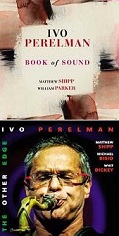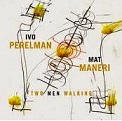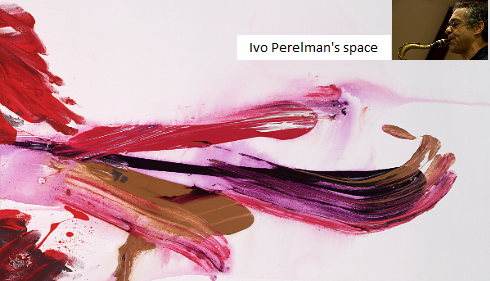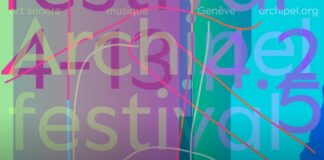 The atonality and the contemporary theories in general have taught us that their importance lies in the representation of reality focused on some physiological states of our lives; the subtle concept that implies a correct interpretation of artistic expression (in our case, the musical art) is that some feelings or some sensations can be better understood when we resort to a certain type of sound and relations between them.
The atonality and the contemporary theories in general have taught us that their importance lies in the representation of reality focused on some physiological states of our lives; the subtle concept that implies a correct interpretation of artistic expression (in our case, the musical art) is that some feelings or some sensations can be better understood when we resort to a certain type of sound and relations between them.
The great figures of modern music who took on the responsibility of an entire area of the music (the area followed by a public of listeners predisposed to the musical “non sense” or to complex meanings of the sounds) have solved the problems of understanding of their ideas through a series of musical patterns seen as a function of that feeling or sensation to express: some of them have dealt with the circumstance in a scientific manner, others have imposed the criteria of the imagination. An example of this seemingly complicated relationship between sound and content, is to be found, also and especially, in the spontaneity of free improvisation, one of the best directions that jazz has taken over time. The partnership between the saxophonist Ivo Perelman and pianist Matthew Shipp (together with the contribution of selected and essential musicians who follow them) shows how the considerations that constitute the thoughts of many important composers of our time (Sciarrino, Lachenmann, Bedrossian, etc.) are shared with the improvisational practices, only if, at the end, the experts will stop to consider the improvisors as “random” musicians. In academic institutions, the composers study and collide with the concepts of linearity (or discontinuity), tension (or relaxation), the vectorial direction of the musical structure (or without directionality), the physical energy (or with the falls of it) etc.. With different modes, in free improvisation, the same results are achieved through simple experimentation on the character of the music that is practiced every day.
In these three new works that Ivo Perelman releases for Leo R,, probably we find a musical balance as never seen in recent years, where the precious expressionist breath of the Brazilian artist is coagulated with free forms of music that have the advantage of a construction in fixed points (almost like an atonal classical composition); they’re often consisting of interactive musical impulses that modify the phase of tension and produce an artistic “listening”.
The collaboration with violinist Mat Maneri, entitled “Two men walking”, follows these principles: the two musicians, immersed in their splendid preparation of unconventional musicians, create a dialogue that flows musically at the same way of the grammar settings of a human discussion. An attempt to built an act of art-music that certainly does not look out of place in front of a chamber composition of Ferneyhough (on the contrary, it could gain higher freedom).
The partnership with Shipp is reinforced with two works: the trio of “Book of Sound”, where the two musicians are joined with bassist William Parker and a quartet, “The Other Edge”, with Michael Bisio and Whit Dickey . They are two valuable works that show, in a convincing form, many of the theoretical principles of which we spoke earlier: “Book of Sound ” marks the reunion of the Cama de Terra’s trio, an historic trio that in this rappresentation greatly reduces the impetus of the gusts of sounds of Perelman; instead of so much power, we find more lyricism and synchronism with the partners: a mature Parker supports the Shipp’s anthropomorphic piano, who at times seems to be looking of cataloged or computerized sounds; the only incompatibility is to step through the maze of mysterious sensations , in which Parker and Shipp are naturally more inclined towards spiritual/cryptic exposures, a condition that Ivo’s style can not always capture.
The abstract expressionism of Perelman is also alive in the quartet of “The other edge” : here, the group’s style forces him to play more intimate and metaphysical . Perelman must necessarily reduce the explosive “charge” of his sax; this allows him to distill more carefully the phrasing and the solos without losing an inch of expressiveness. The reference to ancient Rome that pervades “Panem et circenses” is perfectly externalized: it is a new factor that could become a new musical direction, a factor in the service of historical representation, where music has made of different moods: we perceive a different thing from what we met in the seventies or eighties in Perelman’s career, and also different from what we listened to comment (via overflowing suites) the novels of the writer Lispector; in this attempt to latinization he is certainly helped by the proto-ancestral pianism of Shipp (between clusters and repeated notes with a certain cadence) and by a categorical and fluidizing rhythm section, which supports creativity in order to provide the right point of sneaky description and build one of the best conceptual work of the saxophonist.
__________________________________
 L’atonalità e in generale le teorie contemporanee hanno insegnato che gran parte dei principi su cui si fondono sono basati su una rappresentazione della realtà che si concentra su alcuni stati fisiologici della nostra vita, esprimendo con maggior chiarezza quel concetto subdolo che sottintende una corretta interpretazione dell’espressione artistica (nel nostro caso musicale): alcuni sentimenti o alcune sensazioni possono essere meglio intese quando si ricorre ad un certo tipo di suoni e di relazioni tra essi.
L’atonalità e in generale le teorie contemporanee hanno insegnato che gran parte dei principi su cui si fondono sono basati su una rappresentazione della realtà che si concentra su alcuni stati fisiologici della nostra vita, esprimendo con maggior chiarezza quel concetto subdolo che sottintende una corretta interpretazione dell’espressione artistica (nel nostro caso musicale): alcuni sentimenti o alcune sensazioni possono essere meglio intese quando si ricorre ad un certo tipo di suoni e di relazioni tra essi.Il gesto espressionista di Perelman rimane anche nel quartetto di “The other edge“: costretto dal tipo di formazione a suonare un pò intimo e metafisico, Perelman deve necessariamente ridurre la carica esplosiva del suo sax; questo gli permette di distillare con più cura fraseggio ed assoli senza perdere di un centimetro il campo d’azione dell’espressività. Il riferimento alla Roma antica che pervade “Panem et circenses” è perfettamente esteriorizzato: questo nuova pelle rivestita dal sassofonista per l’occasione sembra poter diventare una nuova direzione musicale, che per esigenze di rappresentazione storica, assume toni e strutture diverse dal Perelman conosciuto negli anni settanta od ottanta, così come la diversità si impone rispetto alle debordanti suites sostenute per descrivere i romanzi della scrittrice Lispector, in questo è sicuramente aiutato dal pianismo proto-ancestrale di Shipp (tra clusters e note ripetute con una certa cadenza) e da una sezione ritmica categorica e fluidificante, i cui autori fanno di tutto per portare l’inventiva al giusto punto di subdola descrittività, per costruire uno dei migliori albums concettuali del sassofonista.







